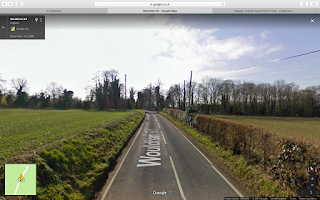Sources and Contacts:
-A broadcast journalist relies on a wide range of sources and contacts in the never ending search for NEW news.
-The best journalists do not just sit and wait for a story to 'appear', they go out and FIND it.
How journalists find stories with 'news value':
-Working what Fishman (1997) called 'beats'- 'patrolling' much like a police officer on recognized chains of information to supply potential stories with 'new value'.
-What beats form part of this chain of information?
-Many of these beats are exclusively accessed by news journalists, e.g. calling police stations or press offices.
-But what other stories are ignored?
Where the newsroom finds it's stories:
Primary sources:
-Your ow direct contacts.
-Original sources direct from source material eg archive material from libraries etc such as Kew -(National Archives)
-Public Appeals
-Press releases/ stats/ official statements
Secondary sources:
-Stringers (freelancers)
-Other platforms/ media.
Wires:
Newsrooms frequently trawl the wires for up to the minute tip-offs on news stories such as:
-P.A. (Press Association)- provide a range of news stories and content for print and digital media for the UK and Ireland.
Correspondents:
-These subject specialists work in newsrooms and are prized for their in depth knowledge and well honed contacts- often invited to confidential 'lobby' briefings with politicians and on the mailing lists of important relevant bodies.
-Lobby politics- influential groups 'lobby' the governments with their own opinions.
Foreign News sources:
-Journalists, editors and correspondents based permanently abroad for news networks E.g. Gavin Hewitt Europe Editor or Mark Mardell North American Editor.
-Sometimes pooled foreign news 'bureau' with other broadcasters.
-Again valued for their local contacts and on the ground knowledge and access.
-Often long hours, lots of travelling due to wide area covered and can be in dangerous or politically unstable areas- special training usually needed and obviously good language skills.
-International news agencies and large scale news organisations such as ABC, NBC and Sky with whom the likes of the BBC have deals.
-Eurovision News Exchange- facilitates the exchange of stories between Eurovision countries.
Archives:
-Many broadcasters have their own archived material which is a rich source of pictures, as well as independent archives which sell on their material under license.
Beware- Fake News:
-They look like news packages and sound like them, but stories are to be approached with caution, as they are often propaganda.
-Think about how many 'stories' now pop up via social media- WHO IS SENDING THEM AND WHY?
-Blurring the lines between MARKETING and NEWS.
-How do you verify and check these stories?
Communication:
-Whichever your source of information and stories, you will need to be a consummate COMMUNICATOR in order to access these.
-As with the documentary until, know the essentials BEFORE you make a call- do your RESEARCH and know what questions you what to ask.
-Get used to USING YOUR TELEPHONE.
-Emails are good for exchanging information and more functional tasks, but nothing can replace CONVERSATION thus-
-Build a rapport, gauge the person you are talking to and make a decision about them ad the story.
Be tenacious and have stamina! Get them 'On Side':
-Sometimes you have to be prepared to be creative in order to get what you need.
-Providing you are being ethical, find ways of negotiating obstacles to gain the access you need.
-Often you need to have a stamina and be prepared to push a story and find a new wayof telling your story in order to make it work.
-When people are reluctant to take part, sometimes with good reason. it is useful to explin that this is THEIR CHANCE to put THEIR SIDE OF THE STORY.
Being creative with your methods:
-The art of tracking people down is one you need to master- do your research to identify KEY CONTACTS and build from their.
-Just like a private investigator you will spend a lot of time trying to find people.
-Sometimes you have to think outside the obvious box.
Deadlines:
-Ultimately you will always have DEADLINES so at some point you will have to deliver, wheher ready or not.
Finding your 'Angle':
-the news angle is key to developing your story.
-The angle can be defined as the main SIGNIFICANCE of the story to your partiular ausdience. It is a particular viewpoint of any story.
-There will inevitably be several angles on any story, your job is to decide the angle which beest fits your story/ style.
What makes a story newsworthy?:
-Choosing the 'lead' story is key in determining the 'most newsworthy' story of that particular bulletin.
-The lead story might vary at different times of the day i.e. what is most engaging for the AUDIENCE at different times.
Newsworthiness:
-Subjective!!! But someone has to do it- SETTING THE AGENDA...
-i.e. Deciding what's important (and therefore what isn't!!!) and putting it in order for the programme.
-Typically you will see 15-20 news stories per 30 minute news programme.
-Therefore out of a potential list of possibly limitless stories nationally and globally, deciding what range of stories and the order in which they should be presented is difficult and influential.
-Part of the task is balancing the tone of the range of stories offered- from hard news, breaking stories to softer 'human interest' pieces.
-Journalistic instinct plays a strong part in this decision.
-Key areas which determine this decision are:
-Location
-Timeliness
-Impact
-Prominence/ 'importance'
-Conflict
-Simplicity
-Broadcaster's 'values'.











































